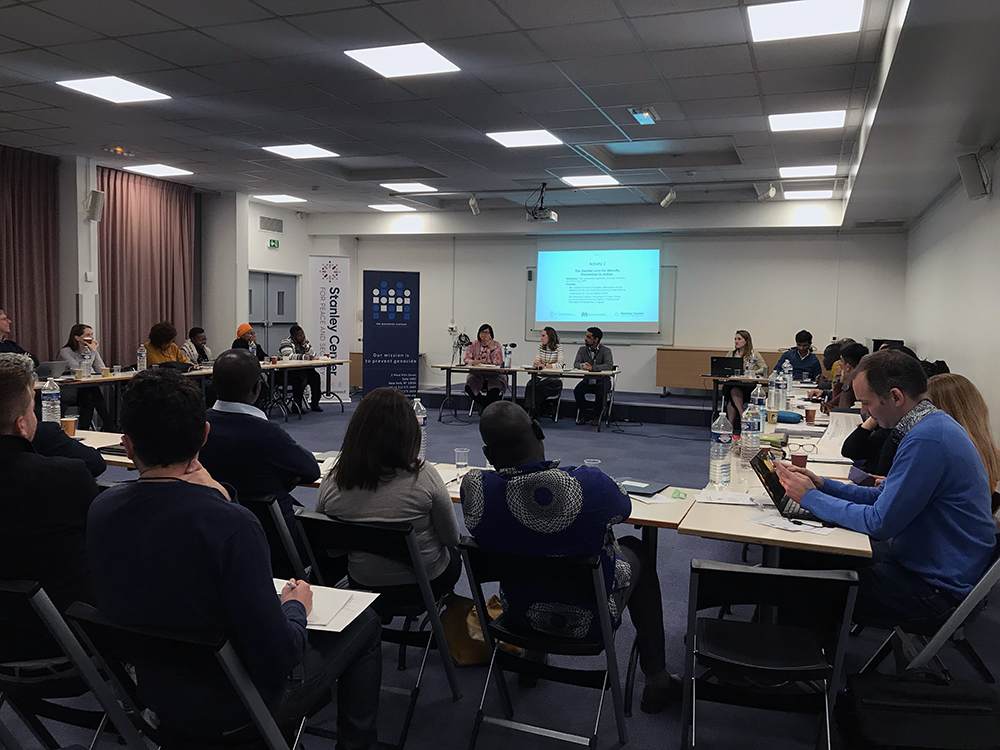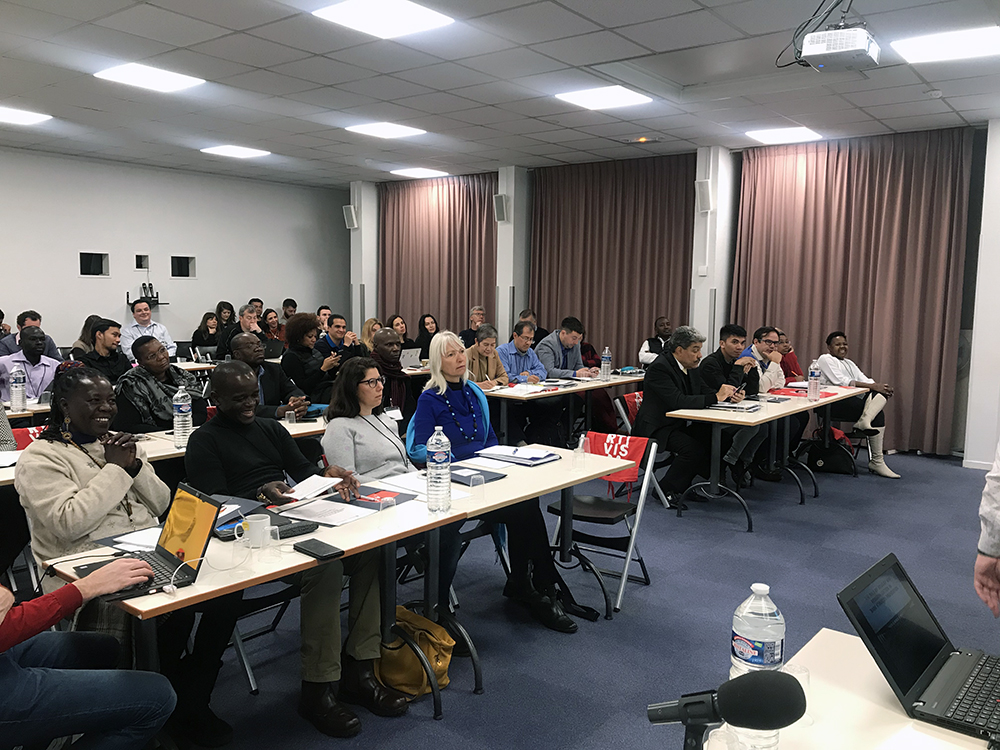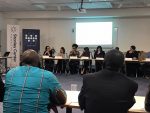From November 12-16, 2019, the Auschwitz Institute joined with the Stanley Center for Peace and Security and the George and Irina Schaeffer Center for the Study of Genocide, Human Rights and Conflict Prevention at the American University of Paris (AUP) to hold “Integrating Prevention and Building Resilience in a Challenging Political Environment,” which served as the 2019 Symposium for Alumni of the Raphael Lemkin Seminar series. Located in Paris, France, the event featured multiple days of interactive discussions, working group exercises, and a guided excursion featuring memorials throughout the city.
 The event was premised on the significant decline in democratic values and institutions that societies across the world have experienced over the past decade. This has, in turn, created a challenging political environment for the prevention agenda at all levels – international to grassroots – with the majority of stakeholders now tasked with implementing preventive strategies in deeply divided societies. In response to this reality, the 2019 Symposium provided an opportunity for alumni of the Raphael Lemkin Seminar and other experts in the field to consider the ways in which atrocity prevention actors can meaningfully confront contemporary challenges and engage more strategically to put a revitalized prevention agenda into action.
The event was premised on the significant decline in democratic values and institutions that societies across the world have experienced over the past decade. This has, in turn, created a challenging political environment for the prevention agenda at all levels – international to grassroots – with the majority of stakeholders now tasked with implementing preventive strategies in deeply divided societies. In response to this reality, the 2019 Symposium provided an opportunity for alumni of the Raphael Lemkin Seminar and other experts in the field to consider the ways in which atrocity prevention actors can meaningfully confront contemporary challenges and engage more strategically to put a revitalized prevention agenda into action.
“Integrating Prevention and Building Resilience in a Challenging Political Environment” was organized in accordance with four guiding focus areas. The Symposium looked to integrate:
- Global, regional, national, and local approaches to preventing atrocities and building resilience;
- State, civil society, and private sector processes for atrocity prevention;
- A gender lens that brings the voices of women and different LGBTQI groups to the forefront of the atrocity prevention process; and
- Transitional justice opportunities into the array of tools for early prevention.
 In addition to many of the time-tested modalities that appear throughout Auschwitz Institute curricula, the Symposium allowed for the debut of new methodologies that facilitated participant discussions. An immersive audio experience, entitled “The Gender Lens for Atrocity Prevention: A Gallery of Voices” was created for the event. The experience featured a collection of real stories from nine survivors of atrocities that have taken place in the recent past. Excerpts of their recorded testimonies were reenacted by professional actors to create the immersive gallery. Attendees also participated in a guided study excursion through Paris, which was designed specifically for the event. The excursion included visits to memorials and other sites of memory concerning atrocity crimes located throughout the city that reinforced the “power of place” of Paris and complemented the program’s contents.
In addition to many of the time-tested modalities that appear throughout Auschwitz Institute curricula, the Symposium allowed for the debut of new methodologies that facilitated participant discussions. An immersive audio experience, entitled “The Gender Lens for Atrocity Prevention: A Gallery of Voices” was created for the event. The experience featured a collection of real stories from nine survivors of atrocities that have taken place in the recent past. Excerpts of their recorded testimonies were reenacted by professional actors to create the immersive gallery. Attendees also participated in a guided study excursion through Paris, which was designed specifically for the event. The excursion included visits to memorials and other sites of memory concerning atrocity crimes located throughout the city that reinforced the “power of place” of Paris and complemented the program’s contents.
Samantha Capicotto, Director of Policy and Planning at the Auschwitz Institute, explains:
At the Auschwitz Institute, we feel it is deeply important to bring our program alumni together – in person – every three years to help our community of stakeholders engage more effectively and collaborate on policymaking and program development for atrocity prevention. When participants complete a Raphael Lemkin Seminar, we explain to them that this is only the beginning of their relationship with us and that they are now a part of a broader community that will be there to support and inspire them in the development of policies and practices that increase our global society’s resilience to mass atrocities. To this end, Alumni Symposia play a key role in the Auschwitz Institute’s ability to keep its promise of continuous support, which is so integral to our mission of building a world that prevents genocide and other mass atrocities.
In the first quarter of 2020, the Symposium’s organizers will release a report on the event. The report will contain more specific information on the outcomes of the interactive discussions held throughout the program. The document will be circulated to all Auschwitz Institute alumni and made available to the broader atrocity prevention community in order to be used as a tool for use by the field as a whole.

